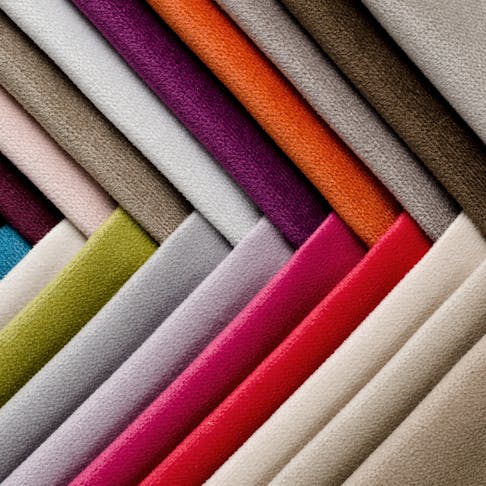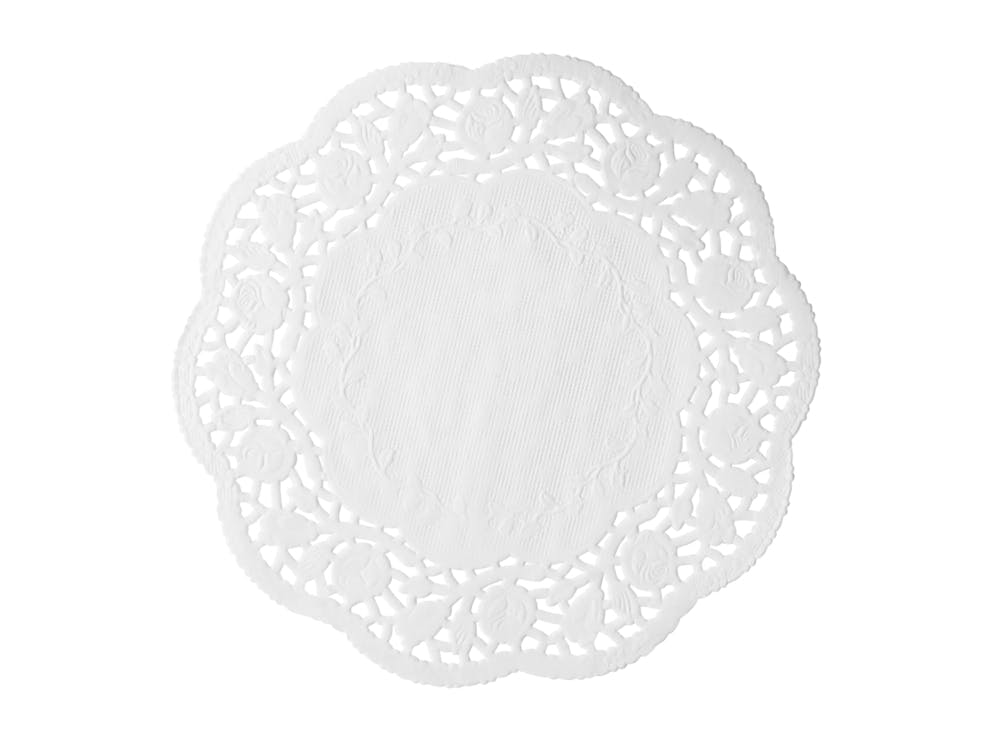
6 Benefits of Laser Cutting in the Textile Industry
Learn more about the different benefits for this manufacturing process.

Laser cutters have become increasingly popular in the textile industry, ever since their introduction in the 1980s. Their popularity is largely due to their accuracy, precision, and versatility, as well as their ability to create intricate designs. These machines can significantly reduce production time and labor costs by increasing efficiency in both large-scale productions, and small-batch custom designs. In this article, we explore six key benefits of laser cutting in the textile industry.
1. Reduced Costs, Flexibility, and Anti-Counterfeiting
Laser cutters provide a number of benefits over traditional cutting techniques, including: precision, speed, ease of use, and automation. Unlike traditional cutting methods, laser cutters do not require the constant attention and skill of the operator, freeing up time for other tasks.
Moreover, laser cutting is faster than traditional methods, which leads to lower operational costs. Laser cutters do have limitations, such as: the number of layers that can be cut at once and the thickness of the material that can be cut. These limitations, however, can be overcome by choosing the right machine.
Laser cutters offer greater versatility than traditional cutting methods, making it possible to create complex designs with ease. Regarding security, some manufacturers prefer to keep their artwork stored electronically and use lasers to produce physical samples only when necessary. This approach helps minimize the risk of theft.
2. Quality in Cutting Fabrics and Pattern Designing
Laser cutting offers a significant advantage in terms of precision and accuracy. The highly collimated beam of laser light is focused into a small, intensely high-energy dot. This beam can achieve clean cuts with minimal tearing of the material. Especially when the thickness and number of layers fall within the capabilities of the laser-cutting machine. This is a level of precision that can be difficult to achieve with traditional blade cutting or hand scissors.
Another advantage of laser cutting is its flexibility in handling both large-scale and custom orders. The process allows for easy design changes by simply updating the digital file and transmitting the revised information to the machine. Furthermore, laser cutters have the capability to handle both basic and complex designs with intricate details. This provides a level of versatility unmatched by other cutting methods.
3. Converting Physical Designing to Digital Designing
In a traditional setting, patterns, and designs are typically hand-drawn on paper or cardboard. The pattern is then used as a template for cutting the fabric. However, this method is time-consuming and prone to errors, leading to the wastage of materials and resources.
With the advancement of technology, designers can now convert their physical designs into digital ones using computer-aided design (CAD) software. The digital design can then be directly fed into the laser cutting machine eliminating the need for manual cutting. This results in a more precise and accurate cut, reducing wastage and saving time.
Digital designing allows designers to experiment easily with different patterns, colors, and designs. They can make changes to the design and preview the outcome before cutting. This reduces the chances of making mistakes. The digital design can also be stored and reused in the future, making it a cost-effective solution in the long run.
4. Rapid Production
Laser cutting machines are known for their exceptional production speed—a significant advantage over traditional cutting methods. The quick speed of the laser-cutting process allows for high-volume production in a relatively short amount of time. In contrast, traditional cutting methods rely on manual labor and are therefore slower and more time-consuming. This manual process also increases the chances of human error and misalignments, whereas the automated nature of laser cutting reduces these risks and ensures consistent results. Additionally, laser cutters can run for extended periods of time with minimal supervision.
Another benefit of laser cutting is the increased design flexibility it provides. Complex designs can be easily programmed into the machine. This capability makes it a great option for producing intricate and detailed products. The speed and versatility of laser cutting make it an excellent choice for production purposes.
5. Efficient Production
Laser cutters are very efficient in many ways. Firstly, the main advantage of laser cutters is their speed. The laser cutting process is much faster than traditional cutting methods, allowing for high-volume production in a short period of time. This is especially important for industries that require large quantities of textiles for production, such as: clothing, upholstery, and bedding.
Secondly, laser cutters are very precise. The laser beam is highly accurate, making precise cuts with consistent results every time. This reduces the chances of errors and misalignments and eliminates the need for manual adjustments. Laser cutters can also be programmed to cut complex designs with ease. This capability further reduces the time and effort required for production.
Finally, the use of laser cutters in the textile industry also results in reduced waste and increased cost-effectiveness. The precise cuts reduce the amount of wasted material. The automated process eliminates the need for manual labor, reducing the overall cost of production.
6. Easier Embroidering, Engraving, and Distorting of Fabrics
Laser cutting technology in the textile industry has opened up new possibilities for embroidery, engraving, and fabric distortion. These processes can be performed with greater precision, accuracy, and ease compared to traditional methods. Additionally, these processes can be achieved in a single step through laser technology.
Embroidery using laser cutting technology is a fast and efficient process. The laser cutter can precisely cut the fabric, creating intricate designs with ease. The accuracy and consistency of the laser beam ensure that each design is identical. This reduces the need for manual adjustments and reduces the risk of errors.
In terms of engraving, the laser beam can be used to create designs and patterns on the fabric. This capability makes it possible to add personalization and customization to textiles. The accuracy and precision of the laser beam ensure that the designs are consistent and accurate, which helps create complex patterns easily.
An example of laser engraving is applying the laser technology in denim engraving. Laser technology is starting to replace traditional denim-distressing techniques. This development could take the denim segment to a level of sophistication that is just not possible with non-laser methods.
Laser cutting technology also allows for the distortion of fabrics. The laser cutter can be programmed to cut the fabric in specific shapes and patterns, creating unique designs and textures. This is especially useful for producing special effects and adding visual interest to textiles.
For more information, see our guide on Laser Engraving.
What Are the Uses of Laser Cutting in the Textile Industry?
Laser cutters have many uses in the textile industry, including: cutting garment patterns, accessories, digital printed clothing, sportswear fabric perforation, leather engraving and perforation, bulletproof vest fabric perforation, outdoor clothing fabric perforation, and hiking backpack fabric perforation. For more information, see our guide on the Uses of Laser Cutting.
What Is the Type of Laser Cutting Used in the Textile Industry?
The textile industry mainly makes use of gas lasers like CO2 lasers. CO2 laser cutters are suitable for cutting a wide range of fabrics, including synthetic materials, and are often used for large-scale production.
The cutting machine consists of: a laser source, a cutting head with mirrors to reflect the laser beam to the cutting line, a PC to operate the entire system, and an appropriate way to remove the cut components. When cutting, inert gases (N2, He) are used to clear the cutting region of debris and smoke while also preventing charring. The laser beam does not get blunt and does not need to be sharpened, in contrast to cutting with typical blade-cutting methods. For more information, see our guide on Types of Laser Cutters.
What Are the Different Types of Textiles Used for Laser Cutting?
A wide range of textiles can be cut with laser cutters, such as
- Cotton
- Felt
- Nylon
- Silk
- Linen
- Fleece
- Lace
- Polyester
- Softshell
- Denim
- Leather
Laser cutters perform especially well on synthetic fabrics and hard-to-cut materials like leather and nylon.
What Are the Manufactured Products Using Laser Cutting in the Textile Industry?
Examples of manufactured products using laser cutting in the textile industry are:
1. Sportswear
Women's sportswear.
Image Credit: Shutterstock.com/Rawpixel.com
2. Embroidered Lace
Embroidered white lace napkin.
Image Credit: Shutterstock.com/Vadarshop
3. Clothing Accessories
Embroidered lace trim.
Image Credit: Shutterstock.com/Inara Prusakova
How Effective is Laser Cutting in the Textile Industry?
Laser cutters offer many advantages over traditional cutting methods, such as: increased precision and accuracy, clean, smooth edges, and the ability to cut a wide variety of materials. Additionally, laser cutting is fast and efficient, making it ideal for large-scale production runs.
One of the main benefits of laser cutting in the textile industry is its accuracy and precision. Laser beams are very thin, allowing them to make precise cuts with minimal material wastage. This makes them ideal for cutting intricate patterns, shapes, and designs, as well as for cutting multiple layers of material at once.
Another benefit of laser cutting is the ability to create clean, smooth edges. Unlike traditional cutting methods, which can result in frayed or torn edges, laser cutting produces a smooth, clean edge that is free of any distortion or damage.
Laser cutting is also a versatile method that can be used on a wide range of materials, including: natural fibers like cotton and wool, as well as synthetic materials such as: polyester and nylon. This makes it an ideal solution for cutting a variety of textiles in the fashion and garment industry.
Is Laser Cutting the Best Choice for Cutting Materials in the Textile Industry?
It depends. Laser cutters are a popular technology for cutting textiles. However, they are not necessarily the best option for every application. The use of laser cutters for cutting textiles is attractive because they offer a high degree of precision, accuracy, and speed. They can cut through a wide range of textiles with ease, including materials such as nylon, silk, and leather that are difficult to cut with other technologies.
However, laser cutting is not the only technology available for cutting textiles. Other options, such as: die cutting, rotary cutting, and ultrasonic cutting, may be better suited for specific applications. The selection is based on factors such as: the type of textile being cut, the desired cut quality, and the production volume required. The initial investment in laser cutting can be more expensive than other cutting technologies. It can also have limitations with respect to cutting thicker or multi-layered textiles.
The laser cutter can be an invaluable tool in the fashion and textile industry. It offers benefits such as: flexibility, accurate and precise cuts, increased production rate, and minimal wastage. It is also safer than conventional cutting machines, has reduced downtime, and ultimately offers better efficiency.
Summary
This article presented six benefits of laser cutting in the textile industry, explained what they are, and discussed the importance of each benefit. To learn more about laser cutting in the textile industry, contact a Xometry representative.
Xometry provides a wide range of manufacturing capabilities, including sheet cutting and other value-added services for all of your prototyping and production needs. Visit our website to learn more or to request a free, no-obligation quote.
Disclaimer
The content appearing on this webpage is for informational purposes only. Xometry makes no representation or warranty of any kind, be it expressed or implied, as to the accuracy, completeness, or validity of the information. Any performance parameters, geometric tolerances, specific design features, quality and types of materials, or processes should not be inferred to represent what will be delivered by third-party suppliers or manufacturers through Xometry’s network. Buyers seeking quotes for parts are responsible for defining the specific requirements for those parts. Please refer to our terms and conditions for more information.



